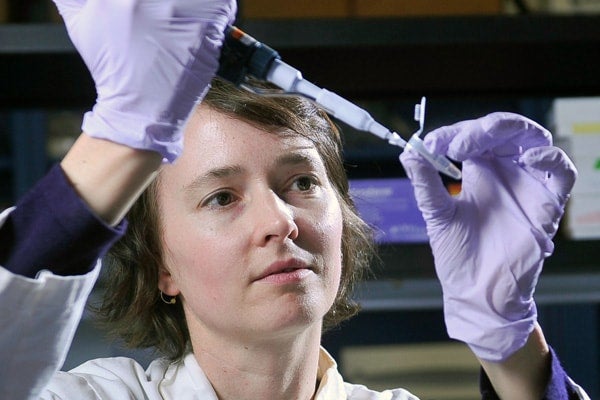
How DNA barcoding could help endangered fish
Published: April 24, 2013
A technique called DNA barcoding could provide a quick and affordable way to help manage endangered species in Atlantic Canada fisheries, a University of Toronto Scarborough (UTSC) researcher has found.
“I think it would be quite useful,” said Megan McCusker, a postdoctoral fellow at UTSC. “On commercial fishing vessels there are people on board to identify the catch, but often they’re not able to identify every species of fish.”
When commercial fishing vessels bring up their nets they inevitably catch some fish with no commercial value. Some of this “bycatch” consists of threatened or endangered species, and regulators would like to know just how big the problem is.
But identifying which species are being caught is hard, short of preserving them and sending them back for examination by trained taxonomists.
DNA barcoding is a technique that can identify a species by looking at only a short region of DNA. It is quicker and less expensive than running a full genome sequence, but also potentially less accurate. McCusker wanted to see how well barcoding worked for identifying fish caught by commercial fishing vessels.
Along with colleagues at Dalhousie University, the Huntsman Marine Science Centre and the Department of Fisheries and Oceans, McCusker took DNA samples from about a thousand fish that had been caught by both commercial vessels and research vessels, and compared results from barcoding to identifications from expert taxonomists.
Of the 177 species in the study, the barcodes successfully identified 88 percent compared with taxonomists.
That success rate is good enough to make it a potentially useful tool for monitoring bycatch on fishing vessels. Rather than take along trained scientists, or preserve the fish and ship them back to the lab, researchers could simply take tissue samples and send them back for a quick analysis, McCusker said.
Eventually, McCusker suggested, someone might develop a handheld device to make the identification on the spot.
The paper was published in Molecular Ecology Resources.



